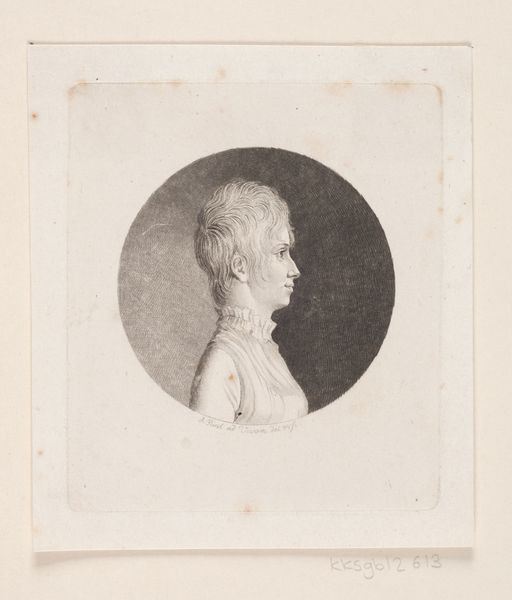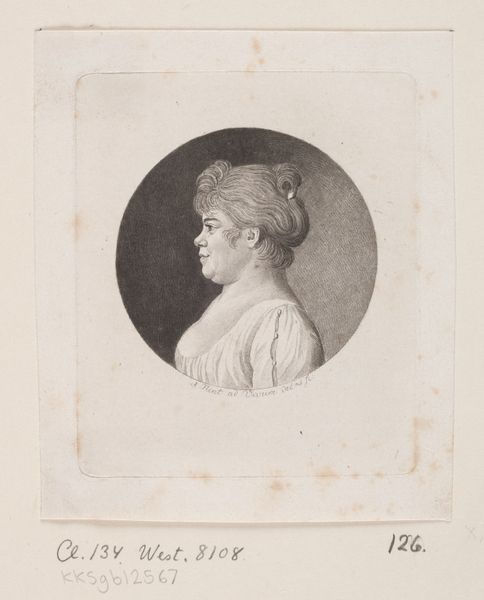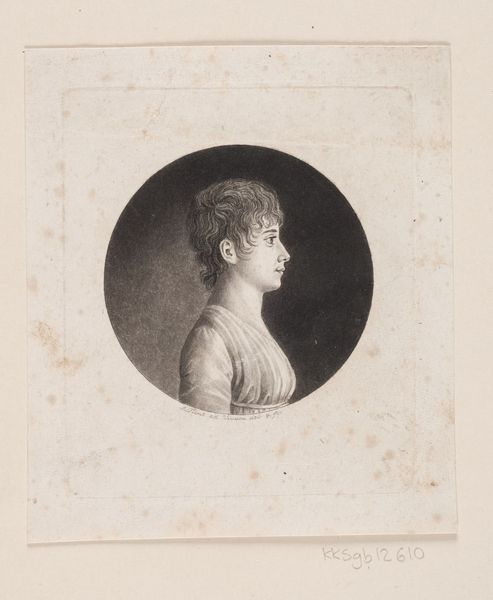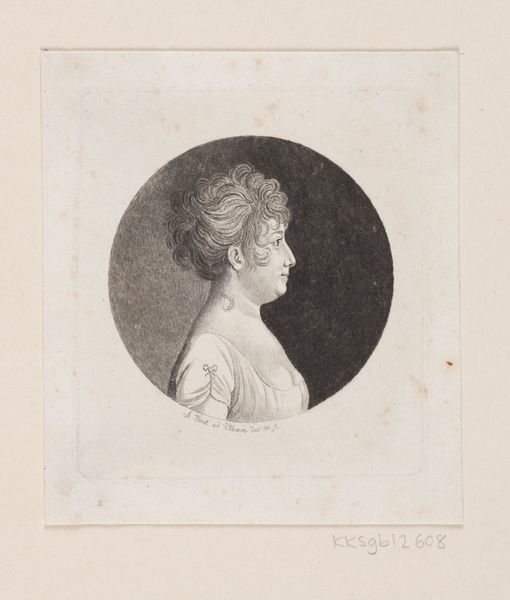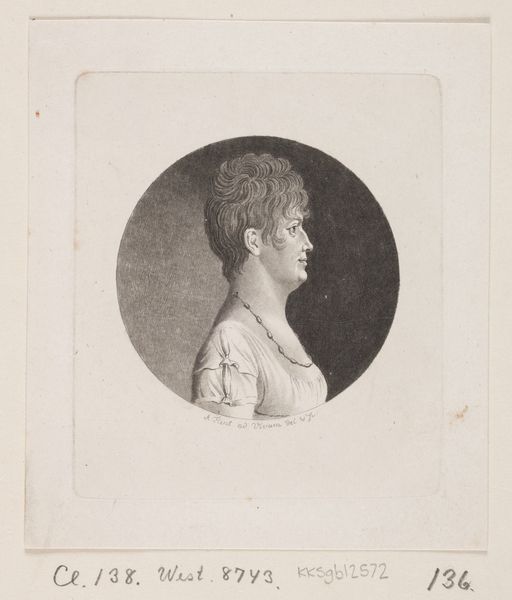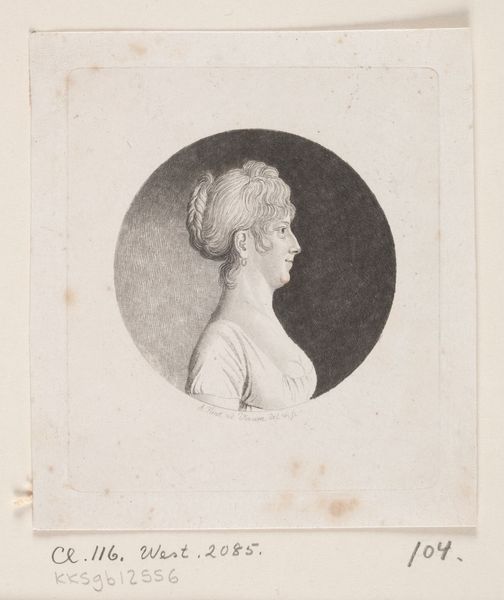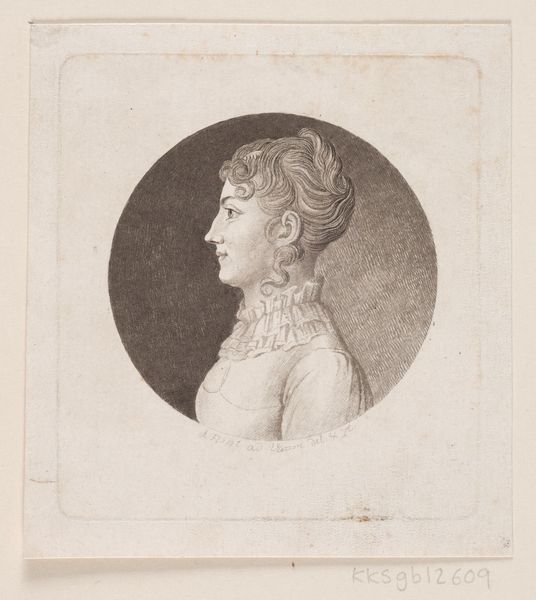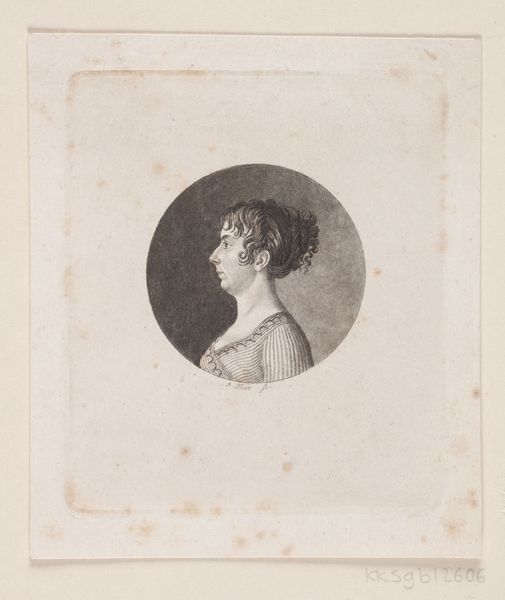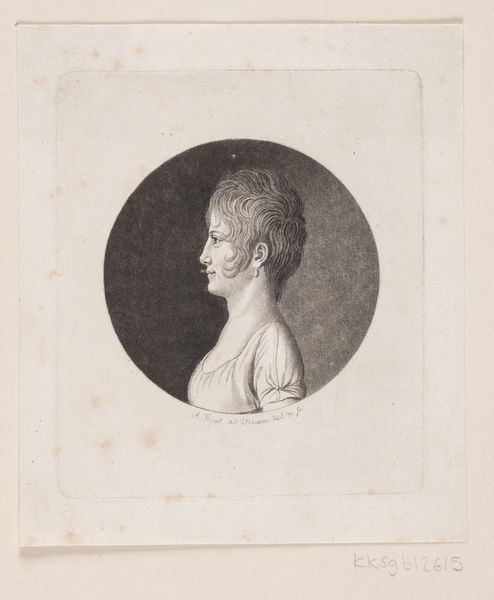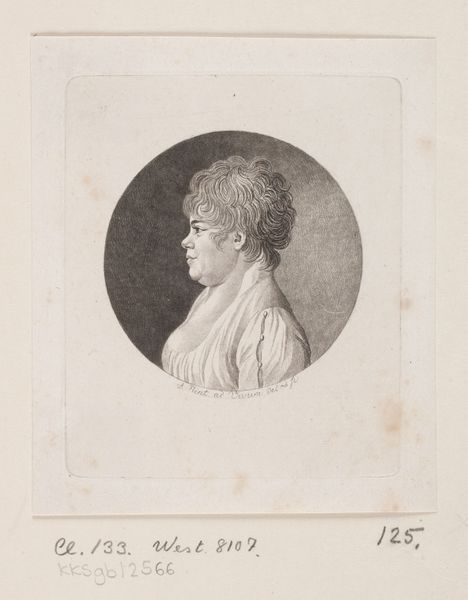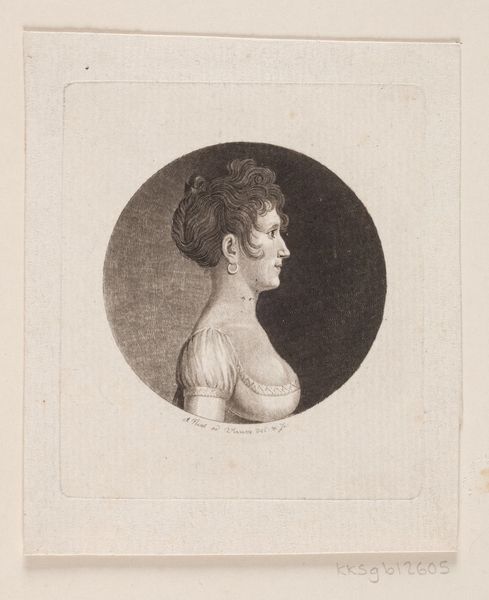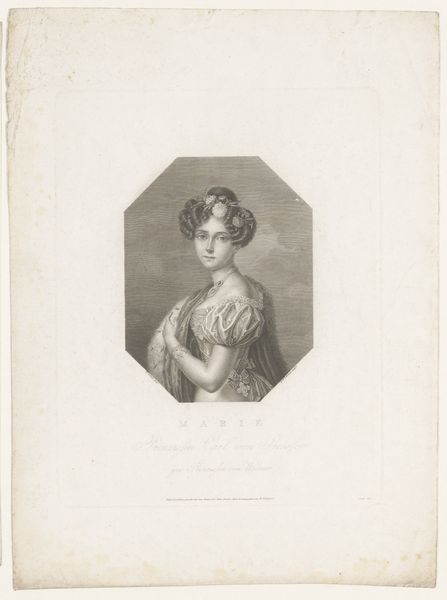
drawing, print, intaglio, pencil
#
portrait
#
pencil drawn
#
drawing
#
neoclacissism
# print
#
intaglio
#
pencil drawing
#
pencil
Dimensions: 59 mm (None) (billedmaal), 81 mm (height) x 73 mm (width) (plademaal)
Curator: This is an intaglio print called "Ubekendt kvindeportræt" or "Unknown Woman Portrait," created sometime between 1767 and 1824. It’s housed here at the SMK, Statens Museum for Kunst, and credited to Andreas Flint. Editor: Immediately, it strikes me as cool and contained. Very neoclassical, this delicate profile. The unknown woman seems almost… sculpted, set against that dark, velvety background. Curator: I feel that coolness too. Intaglio, of course, lends itself to that crisp, almost clinical precision. It is made on either copper or zinc plates with cuts holding ink, capable of extremely fine lines to describe not only features of her profile, like her nose and lips, but even tiny hairs in her styled coiffure. The neoclassical movement embraced a kind of aesthetic purity, and the printmaking medium feels well-suited to express that sensibility. Editor: It makes me wonder, though, about the labor involved. Flint had to be both skilled craftsman and artist, meticulously engraving that plate. It’s easy to see this as an idealized image of femininity, but what about the lived experience, the material reality of producing it? The materials, copper, ink, paper--were all tied up in social relations and hierarchies. Curator: It’s interesting you mention that contrast because I’m not entirely sure it succeeds. I notice tiny imperfections – faint scratches, a slight unevenness in the shading of the background – that seem almost human, in defiance of this ideal. They create, at least for me, a certain vulnerability. And beyond that, consider the role of portraits in commemorating one's life. This lady likely wore her best garments for the picture, wishing to have a memorable stance in visual culture as somebody. Even as “unknown” and set against that stark neoclassical background, there's a spirit present. Editor: True, perhaps my focus on the material obscures other readings. Thinking about this print in its social and political moment offers another way of entering the picture: how many hands had to prepare everything, how the access to those materials impacted the ability to make art. This focus could challenge the concept of unique authorship but can add complexity to the creative journey, not undermine it. Curator: So, a story etched not only in lines, but also in the materials that brought it to life. What a powerful connection.
Comments
No comments
Be the first to comment and join the conversation on the ultimate creative platform.
